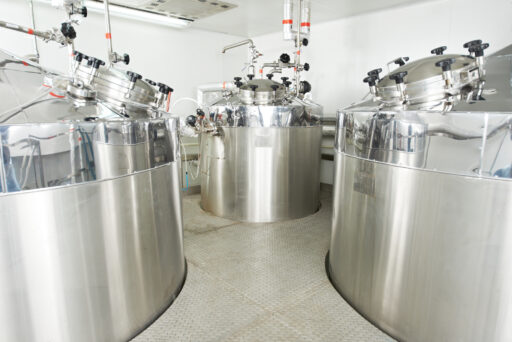 The idea of gaining – and maintaining – adequate process control during drug synthesis isn’t new. It underscores the entire point of approaches such as Quality by Design (QbD), and has long been a key element of pharmaceutical manufacturing. Process control is not only a GMP requirement in its own right, but is also a necessary part of process validation.
The idea of gaining – and maintaining – adequate process control during drug synthesis isn’t new. It underscores the entire point of approaches such as Quality by Design (QbD), and has long been a key element of pharmaceutical manufacturing. Process control is not only a GMP requirement in its own right, but is also a necessary part of process validation.
Process control refers to more than just the physical steps of synthetic processes. It also involves the analytical aspects of a drug compound. These two facets of pharmaceutical development and manufacturing work hand-in-hand.
Contract Pharma defines In-Process Control (IPC) as:
“Checks performed during production to monitor and, if appropriate, to adjust the process to ensure that the intermediate or API (drug substance) conforms to its specifications and/or other defined quality criteria.”
 ICH Q7A: From Starting Materials to Finished APIs
ICH Q7A: From Starting Materials to Finished APIs
In-process controls are governed by International Conference on Harmonization (ICH) Q7A guidance, which explains the importance of such checks: “A reaction step may generate an impurity that may be carried over to the active pharmaceutical ingredient (API), regardless of how far apart that process may be from the API.”
ICH Q7A guidance is very clear on the range of controls which must be used – from master production instructions to batch production records and specification-setting. Among the key attributes for process inputs such as intermediates, detailed production records are required. These include the process sequences which were used to create the material, the range of process parameters, sampling instructions, in-process controls (and their acceptance criteria), and other elements.
Synthesis: Watch Your Inputs
Looking at process control from the synthetic perspective, setup is key. We must keep in mind the specifications of the key starting materials both during the intermediate phase and after the final product is produced.
Developing an effective, reproducible synthetic pathway rests almost entirely on the setup. The sourcing of input materials – whether precursors or intermediates – is a critical step. Remember that when seeking to maintain adequate process control, everything downstream relies heavily on the process inputs. Impurity profiles should be developed with a thorough understanding of raw material sources and their respective syntheses.
Commercial sources of materials are preferred over laboratory-grade materials, as they have higher purities and the requisite scalable processes needed to prepare commercial batches.
Just how important are the starting materials? From Pharmaceutical Technology Europe:
“Chemical processing differs from product manufacturing. For example, the manufacture of a finished product typically involves a molecular entity that is stable under normal conditions and can be stored for prolonged periods without losing its physical and chemical characteristics. Most chemical reactions, however, require very tight controls and close monitoring of their progress because any of several potential result paths may be followed if conditions are not monitored closely.”
Setting tighter product specs doesn’t necessarily lead to a superior drug compound.
Tighter specs might, in fact, yield no product at all. When developing an impurity profile, it’s important to set impurity specifications to meet regulatory standards, but you shouldn’t go too far. When specifications are too narrow or impurity thresholds are set too low, consistent production at scale can become much more difficult.
We recommend a strategy of maintaining broader specifications at first, tightening them as the compound progresses through scale-up and optimization. Once better process understanding is gained, process control can be applied.
‘Watching Your Inputs’ Means ‘Minding Your Suppliers and Knowing Your Ingredients.’
The ICH Q7A guidance also specifies the necessary procedures for the receipt, identification, quarantine, storage, handling, sampling, testing, and approval or rejection of materials.
API manufacturers such as Neuland must have in place robust supplier evaluation programs to ensure the quality of any critical starting materials or intermediates. Supplier evaluation includes a range of criteria, from the company’s regulatory/compliance history and practices to the technical capabilities of its process chemists and quality assurance team.
In terms of the specific input materials, it is important to understand and manage each one according to its traits. At Neuland, for example, the raw materials we use can be sensitive or unstable. Some are moisture-sensitive, others can be sensitive to force, or combustible. Because of these materials traits, attention to containers, storage and handling is essential.
The Finished API: Setting the Right Specs
Earlier, we mentioned that setting specifications that are too narrow (or too low) can result in major headaches at commercial scale. So how do you set the right specs? Many experts agree that it is part-science and part-art, and this is largely true.
The primary objective is to ensure the API synthesis properly controls impurities – including organic impurities, inorganic impurities, residual solvents and – if applicable – microbiological impurities and endotoxins. Equally as important, the process must be inherently reproducible at scale.
In-process controls are a critical aspect of compliant API manufacturing. As the first step of a sound quality program, process controls ensure manufacturers have a thorough grasp of the process and its parameters, and that they are able to identify process & product issues before they escalate.










